Note: This post contains affiliate links. As a Skillshare Affiliate and Amazon Associate I get commissions for purchases/signups made through links in this post.
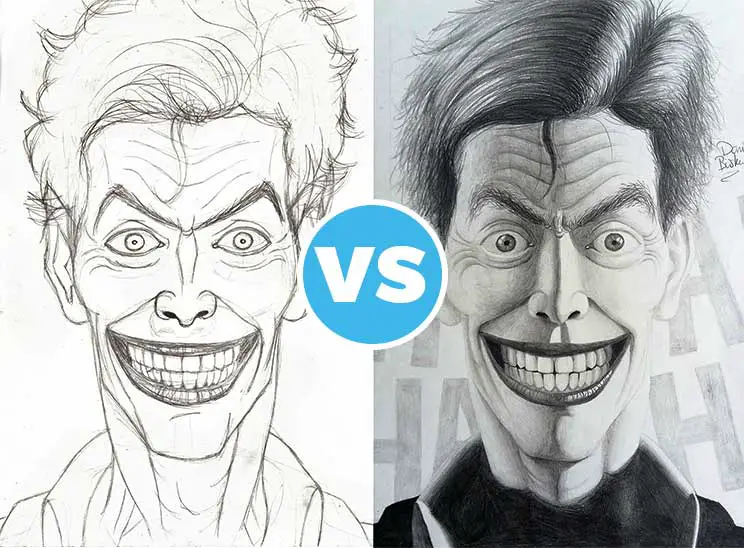
Tell me you don’t know this:
You start drawing, get into the zone and suddenly have this awesome sketch.
Fully motivated, you decide to refine it and make it even more awesome.
But it falls flat. That fabulous sketch has become an ugly variant of itself.
So, why do your sketches look better than your finished art?
In short:
Your sketches look better than your finished art because they are looser and feel more lively. They are less defined, so mistakes aren’t as apparent. Also, your finished art might look too “perfect”.
Let’s get into the nitty-gritty details below!
Table of Contents
1. Sketches Are Looser And Feel More Lively
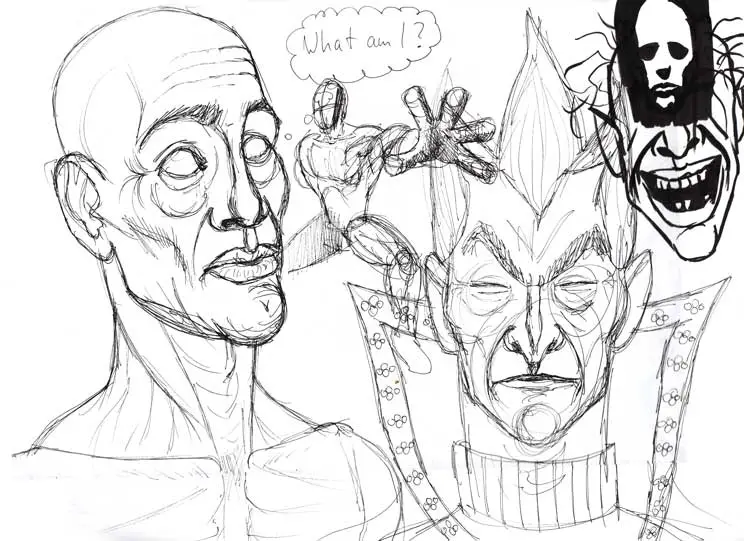
The first one is one of the most important reasons your sketches look better than your final art.
It’s about the nature of sketches in general:
Very often, sketches feel more lively than finished art. They are rougher, looser, and less rigid.
That makes them look much more energetic.
The lines flow freely and are full of vim and vigor. There are many random little marks that you didn’t plan, but that add to the liveliness of your sketch.
Sketches are often done quickly and many elements that make it look good just seem to happen.
Finished pieces of art often lose this quality.
In fact, they can end up being the exact opposite: meticulously planned and executed.
2. Sketches Are Less Defined And Hide Your Mistakes
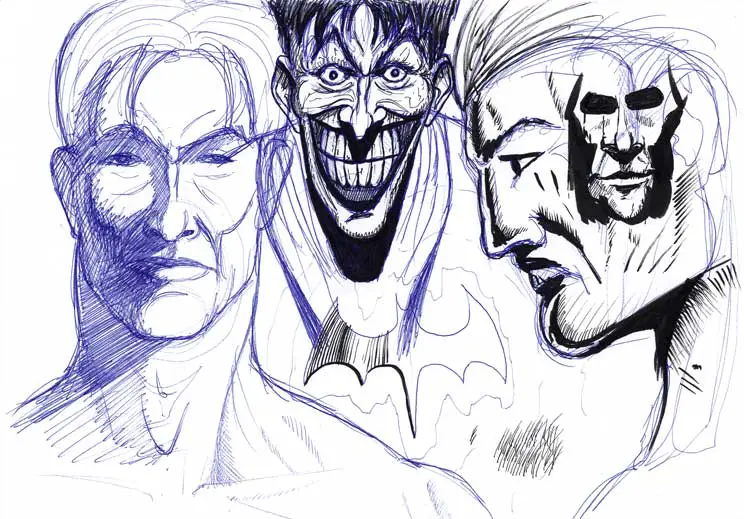
The second reason is probably just as common as the first one.
Sketches use much more little lines and marks. They are less stiff than finished drawings.
While that can add to their appeal, it can also cover up your mistakes!
How?
Often, you don’t really hit the right line instantly when sketching. So you draw over an area again and again and again, until it looks about right.
What happens is that these many lines in one place kind of “average out” to be the right line.
Your brain fills in the gaps.
Let’s take my sketch from above, for example. On the chin there are many little lines:
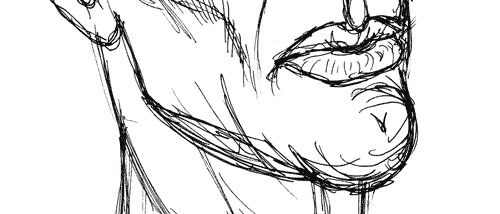
But your brain pretty much sees this, when looking at the sketch:
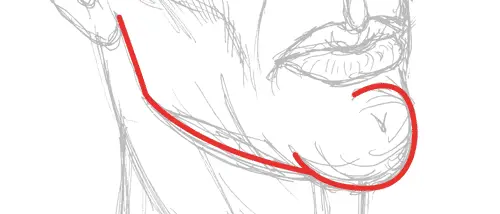
Now, look at the whole sketch. The left is what the sketch looks like and the right is what your brain makes of it:
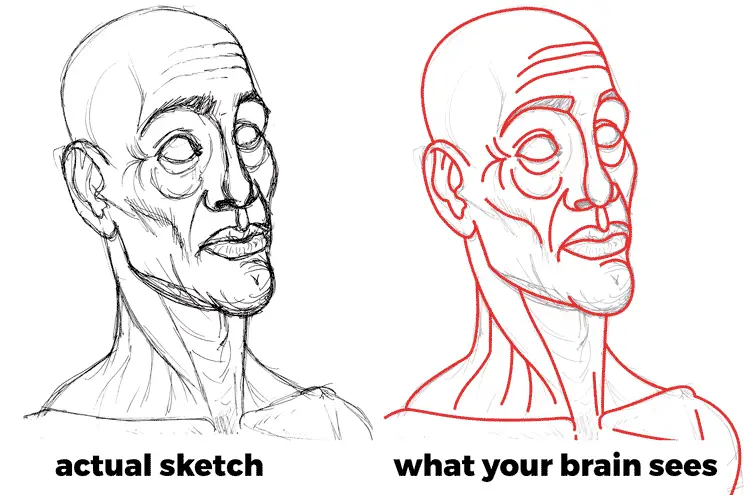
Your brain looks for simple shapes – and if they aren’t there, it kind of “makes them up”.
Sounds great, right?
Not so fast.
This can be the exact reason your finished art looks worse. You don’t have that leeway there – you need to be precise!
Finished art is usually a lot more detailed. And the more polished you want your final work to look, the more precise your lines and shapes need to be.
That means that if you can’t find a way to draw the right lines and shapes in a clean and accurate manner, then yes, your sketch will probably look better.
3. Finished Art Can Be Too “Perfect”
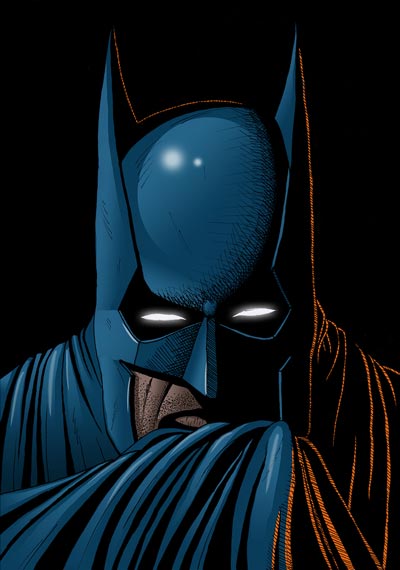
But there also is the opposite problem.
Your finished art is too polished.
You don’t need to draw every little detail. You don’t need to smooth every little gradient.
If you do that, your artwork will tend to look like something straight out of a computer.
Don’t get me wrong – I do like digital art and practice it myself. That’s not what I mean. The goal with digital art usually is to make an artwork look at least somewhat painterly. And not like a clean vector illustration.
If there are no brush strokes, no pencil lines, no hatched lines or something similar, there’s basically nothing that makes it look like a drawing or painting.
For example, look at my Batman comic art piece above. It’s a digitally colored ink drawing. Every gradient is super smooth and shadows are crisp. Then there are the perfect highlights and the glowing eyes.
I still like it and it’s just what comic art is all about… but I think you get my point. The ink drawing itself looked less “perfect” by itself:
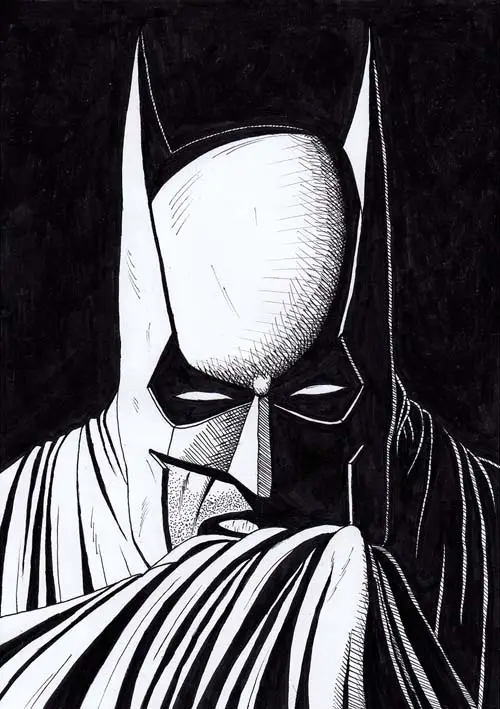
Assuming that you are good at rendering, your art can even look like a photograph.
If you’re into (hyper)realistic drawing, that’s cool.
But it can be the reason your sketches look better and pack more punch.
4. You Don’t Know How To Draw Good Line Art
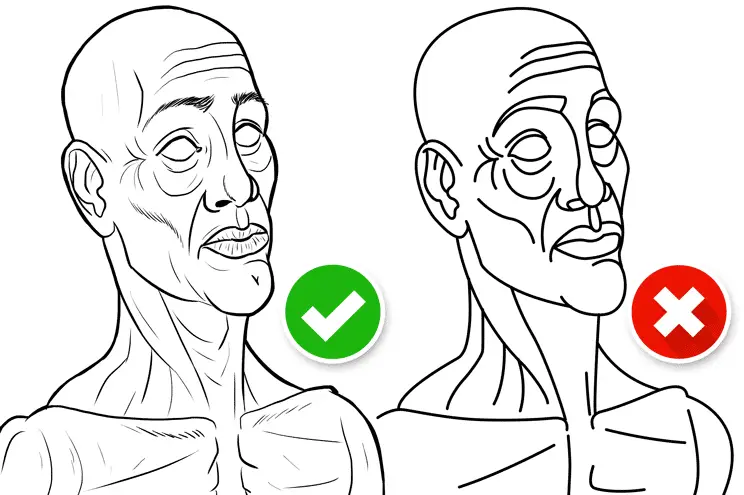
Line art is kind of a special case. That’s why I want to go into this one as well.
If your sketches look better than your line art, it’s because your final lines don’t match the lines of the sketch, your lines are too clean, or your line weight doesn’t vary. A lack of details can also be a major culprit.
Let’s take a deeper look at it.
4.1 Your Lines Don’t Match The Lines Of Your Sketch
For paintings, your initial sketch does play a role, but it will usually be completely replaced by shapes in different values/colors.
For line art, the sketch becomes much more important. It kind of serves as a base for your final art.
If your sketch is very accurate, you can almost trace it.
But most of the time, a sketch is much more free-flowing and has lots of lines in the same place.
In this case, you can’t really match the lines of your sketch. Somewhere inbetween all those lines lies the “right“ line and it kind of becomes a guessing game to find it.
4.2 Your Lines Are Too Clean
Another problem can be that your lines are just too clean.
If a straight line is perfectly straight and a curved line is perfectly curved, your artwork will inevitably look like a computer made it.
That’s fine if that’s what you’re going for. But if you want to create more “organic“ art, you need to allow for some imperfection.
Tip: Don’t use the pen tool for your line art. It’s great for creating perfect vector graphics, but not for line art. Do it freehand with the brush tool and a graphic tablet. I use and recommend the XP-Pen Artist Pro 16 TP (read my review here).
CHECK OUT: Must-have Art Equipment I Recommend
4.3 Your Line Weight Doesn’t Vary
The third problem with line art is when you stick to one line weight only.
The thickness of your lines plays a vital role in how good your line art looks. If all your lines are equally thick, your art will probably look somewhat boring.
It’s just not interesting to look at. It’s too simple.
To spice things up, you should add some variety to your lines. There are so many options you can choose:
- make the outlines thicker than the inner lines
- make the lines of bigger shapes thicker than those of small details
- draw foreground elements with thicker lines
- draw characters with thicker lines than the background
And these are just some examples. What it comes down to is that you can really guide the viewer’s eye by choosing which elements to draw attention to most.
Improve Faster With My FREE e-Book!
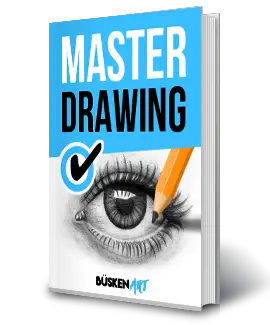
Learn how to MASTER drawing in 5 easy steps with my FREE PDF guide!
Discover a methodical way to learn drawing effectively!
4.4 Your Line Art Lacks Details
When drawing line art over your initial sketch, you usually use simple lines. It’s different from sketching, where you often use many little lines until you “find” the right line.
The result is that you lose a lot of detail and your art will end up looking too basic. It’s a good idea to add a few details here and there to make it look more interesting. Just like I did in the sketch above, where I added many skin folds to the face.
5. Your Finished Art Might Not Look Like You Imagined
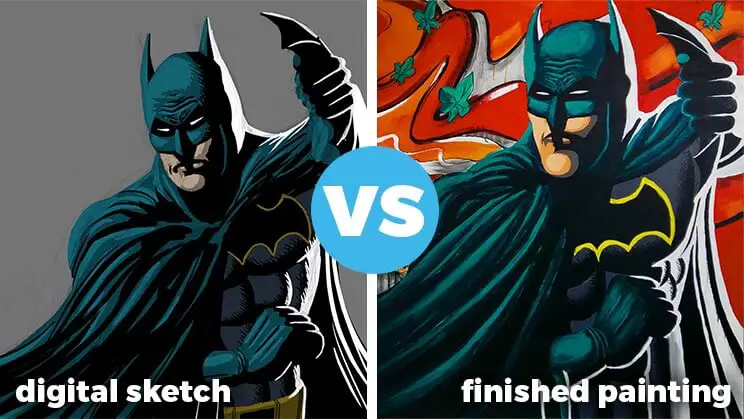
Let’s face it:
It’s hard to paint something from imagination.
As artists, we all have a lot of imagination. Our minds are full of awesome images that are just waiting to get put on paper. This is usually not the problem.
The problem arises when it’s time to transform your imagination into a drawing or painting. That’s the hard part.
Often, the outcome is too different from the image in our head. Sometimes very different.
The sketch might look fine to you. Depending on how loose it is, it might transport just a rough idea of what your finished piece of art could look like. You can already see it in your mind. It’s going to be great!
Until you start to work on it… and it just isn’t. That can be quite discouraging.
The Solution?
I think the solution is to separate the sketch from the final artwork.
A sketch is its own thing.
A sketch can act as a unique (rough) piece of art.
Or it can serve as the base for a more complex drawing. But in this case, don’t use it as an exact roadmap – otherwise, you might be disappointed if the final drawing looks too different.
For example, let’s look at this Batman street painting I did together with an artist from my hometown in 2019:
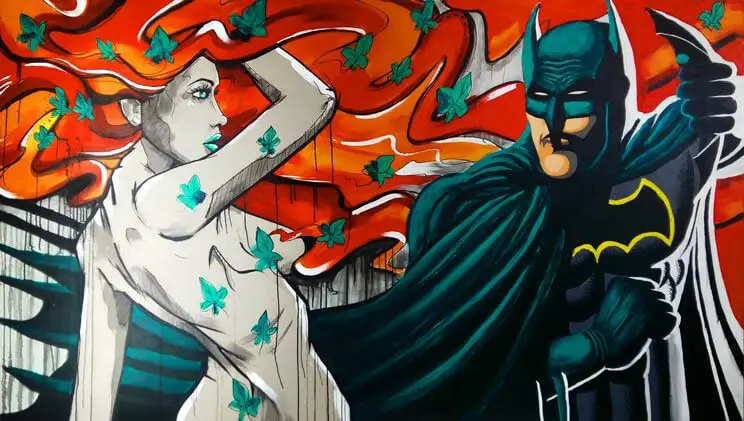
I was responsible for Batman, while she painted Poison Ivy. I do like the end result. But, to be honest, it didn’t really look like my sketch:
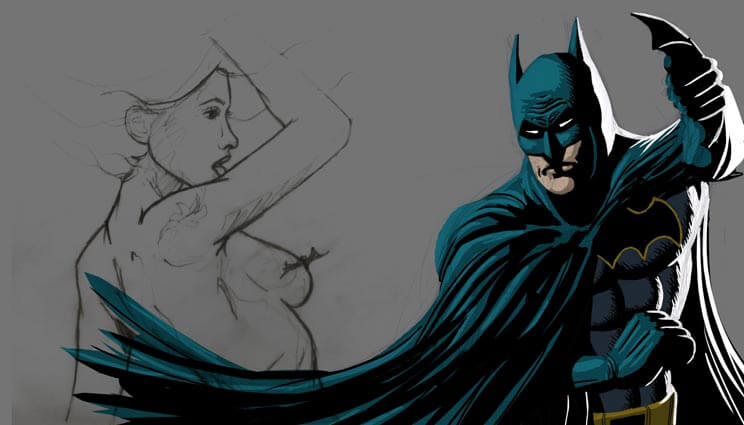
Let’s look at both side by side:
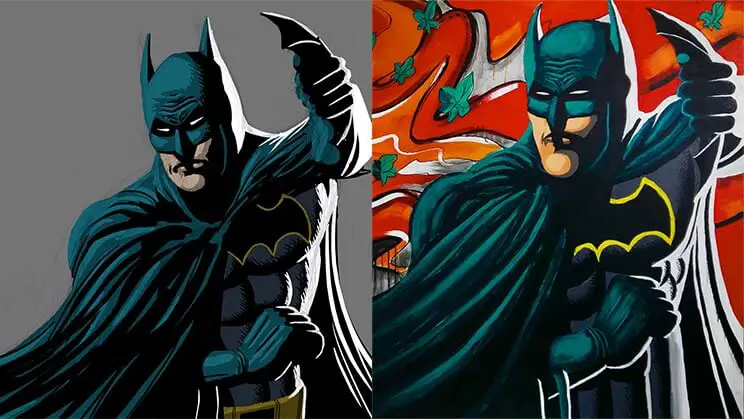
They’re close, but I have to admit that I like my sketch more.
The pose is a little bit more dynamic and the shapes, especially of the head/mask, are just… better.
But in the end, the sketch is its own thing.
My final piece of advice is to separate the image in your head from the final artwork.
The truth is:
Even as an artist with years under his belt, the image in your head will probably still look somewhat different than your finished piece.
You can of course try to match your imagination as well as you can – but always try to look at your drawing as a separate thing.
6. There’s Less Pressure When Sketching
Finally, there are also psychological reasons for our problem.
The thing is that you’re probably just more relaxed when sketching.
For many people sketching or doodling is an activity they do to wind down. In this case, you usually don’t try to force an outcome.
Often, good sketches just “happen”.
With finished art, it’s different. There’s more pressure to make it look good. You have this specific image in your head that you want to put on paper. You do your absolute best. You want to make it good, it must happen.
The consequence:
Your imagination battles with your skill.
If your drawing skill isn’t developed enough yet, you will have a hard time creating something that matches your rich imagination.
That’s normal to some extent. Just try to get better at drawing over time and your ability to match your imagination will improve.
My guide about getting better at drawing fast should help!
Final Thought – It Will Get Better With Time
While this problem can remain for a long time, it should get less relevant the more experienced you get.
The better you get at drawing, the better your sketches will be. And the smaller the difference in quality between your sketches and your final art.
READ NEXT:
Why Your Art Looks Weird When Flipped

great job on making this website and I love your artwork
Thanks a lot! 🙂